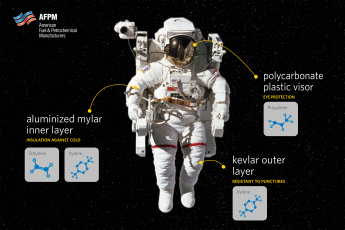Given low domestic recycling rates for plastic, the efficacy of recycling is often called into question. But that doesn’t mean recycling doesn’t work. Advanced recycling technologies — as well as traditional mechanical recycling — play a pivotal role in addressing plastic waste and recovering the value in used plastics.
Below we lay out the recycling basics and explain how advanced recycling technologies complement “mechanical” recycling, and why both types of recycling need to be part of the global strategy to end plastic waste.
Q: What are advanced recycling technologies, and how do they differ from mechanical recycling?
A: Advanced recycling isn’t just one type of recycling, it is a suite of technologies that use chemical reactions to break down plastic waste into its original molecular building blocks to produce either synthetic oil, synthetic gas molecules or monomers that can be used to make new valuable virgin-quality plastics.
The counterpart of advanced recycling technologies is mechanical recycling, which is what most of us are familiar with. Mechanical recycling involves shredding, melting and remolding used plastics — no chemical reactions involved.
Advanced recycling technologies are not a replacement for mechanical recycling. It’s a necessary complement. Together, the full range of recycling technologies can give new life to used plastics and keep waste out of the environment.
Check out our infographic for a more detailed explanation of the different types of recycling.
Q: What are some of the advantages of advanced recycling technologies?
A: Mechanical recycling is often the first choice for many recyclers, because of its comparative simplicity, but advanced recycling technologies have a specific role to play too. Here are three benefits of advanced recycling, showing why it’s an important component of plastic waste reduction strategies right alongside mechanical recycling:
- Advanced recycling technologies work for a broader range of plastic feedstocks. A wider variety of plastics can be recovered and converted back into polymers that are as strong and pure as virgin plastics.
- Advanced recycling technologies can be used to make a wider range of recycled end products. Because of their virgin-quality and strength, polymers resulting from an advanced recycling process can be used to make a broader range of plastic end products, including plastics that are suitable for food and health care applications and also plastics capable of meeting the regulatory and safety requirements for things like vehicle parts and air bags.
- Advanced recycling technologies can reduce the emissions impact of plastics. Compared to the emissions intensity of manufacturing plastics from newly-extracted natural resources, advanced recycled plastics offer significantly lower lifecycle emissions and environmental impacts, according to a 2023 study by Argonne National Laboratory.
Q: If recycling ‘works,’ why is the U.S. recycling rate just 9%? What can be done to expand the efficacy of recycling as a waste reduction strategy?
A: Two things can be true: Recycling works and the recycling rate in the United States is far too low. That second part is what needs to change, and here’s how we see that happening:
- By expanding waste management and collection: Much more plastic is “recyclable” than what actually makes it into the U.S. recycling stream, and we know this because other countries have much higher recycling rates. Expanding and upgrading waste collection and sorting systems throughout the United States will help solve for this.
- By designing plastic products that are much easier to recycle: More and more products today are being designed with recycling in mind. Manufacturers are cutting unnecessary volume from packaging and they’re reducing the number of products containing multiple types of plastic, all of which can be barriers to recycling, especially mechanical recycling.
- By improving the regulatory environment for recycling: Modernizing the regulations governing recycling processes and feedstocks could spur new investments in recycling infrastructure and waste collection systems while also growing the market for recycled feedstocks. For example, regulations classifying advanced recycling facilities as manufacturing — not waste — operations, and recognizing their outputs as equivalent to virgin feedstocks, would provide regulatory certainty and help boost recycling rates.
Q: What is AFPM’s position on plastic products, plastic waste and the role of advanced recycling technologies?
A: Plastics are essential in our modern world. They offer many advantages for consumers and manufacturers and will become even more important in the decades ahead as the global population grows.
At the same time, plastic waste in the environment is unacceptable. Re-using plastics, reducing unnecessary packaging and redesigning products to maximize their recyclability, building out more waste collection and sorting infrastructure, and expanding the role of mechanical and advanced recycling all have parts to play in eliminating waste.
Advanced recycling, specifically, needs to be part of the strategy because it offers us the greatest potential to expand the universe of plastics that can be recycled, while reducing the extent of our dependence on natural resources in the manufacture of plastics.
AFPM considers all plastic policies through the lens of five guiding principles, which you can read more about here.
The American Fuel & Petrochemical Manufacturers (AFPM) is the leading trade association representing the makers of the fuels that keep us moving, the petrochemicals that are the essential building blocks for modern life, and the midstream companies that get our feedstocks and products where they need to go. We make the products that make life better, safer and more sustainable — we make progress.


